
Written by digiDirect
Compared to a more traditional photo, a long exposure can be much more dynamic, and it the case of a landscapes it gives viewers a look at what a landscape looks like over minutes or even hours instead of a single image frozen in time. You too can take advantage of long exposure photography for landscapes - all it takes is a little patience, planning and the correct gear!
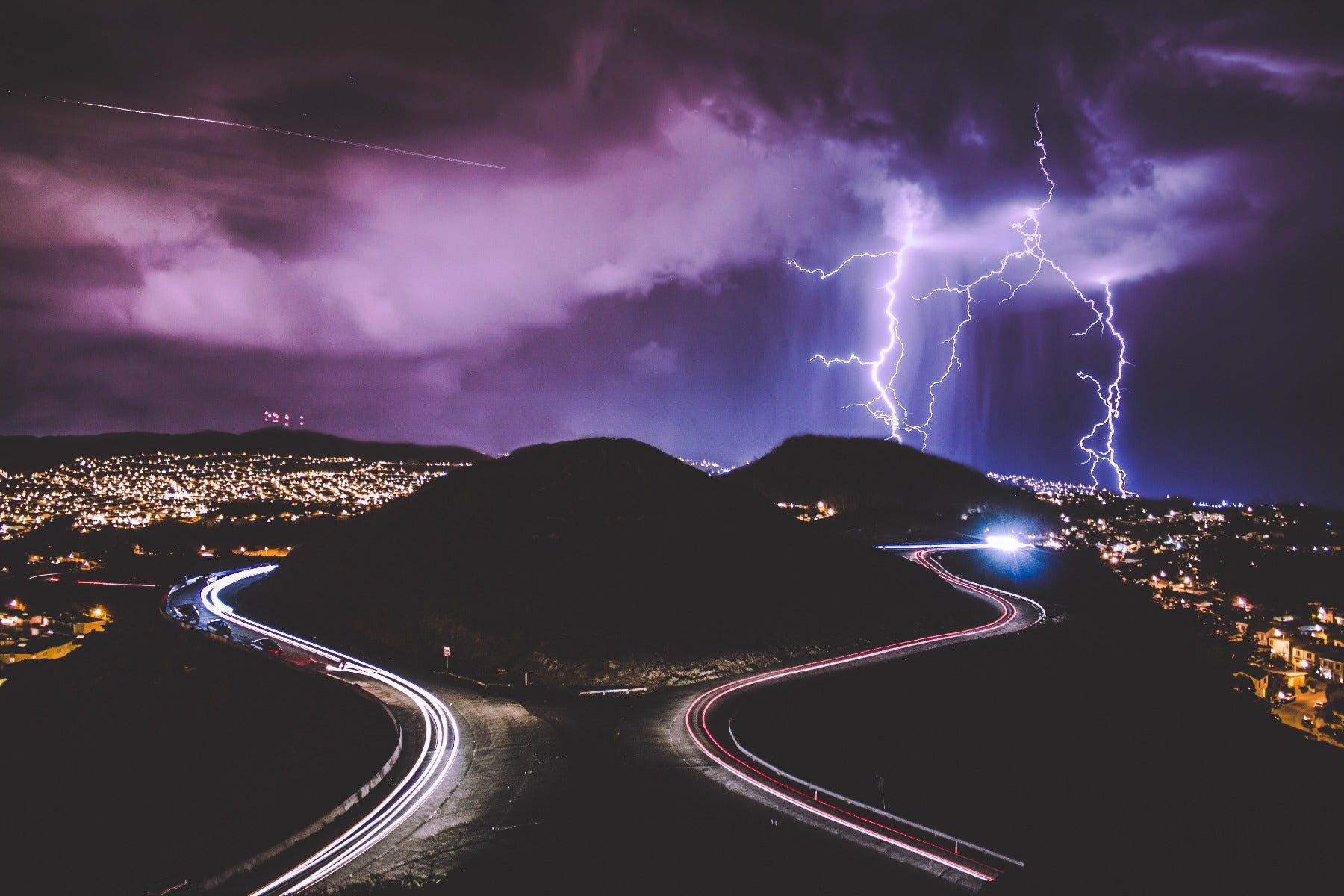
Lightning and headlight streaks can be captured with long exposure
When to Use Long Exposure in a Landscape Setting
The two main subjects of long exposure in landscape photography have traditionally fallen into the category of "water" or "sky". Here are a few subjects that benefit from long exposure:
- Waterfalls - Using long exposure allows you to capture the wild beauty of a waterfall, showing the audience what thousands or millions of litres of water look like in motion without the use of a video camera.
- Seas and Steam - Give a sense of waves crashing and brooks babbling with a single shot. Long exposure photography can help you portray the true richness of colour that the ocean can offer, bringing together diverse blues, greens and purples into one frame.
- Clouds - Clouds have been a popular long exposure subject for years because you can generally always count on a cloud or two in the sky. They're an excellent way to practice your long exposure skills, making beautiful patterns in the sky and catching a sunset like nothing else.
- Stars - You can track the movement of stars in the sky with the correct equipment and a little timing. For example, taking an image of the Milky Way is the product of the long exposure technique.
- Roads or Headlights - Maybe you want to capture a long and winding road in the mountains or down in a valley, or you want to capture a car's headlights as it moves through the dark. Either way, this technique will help you.
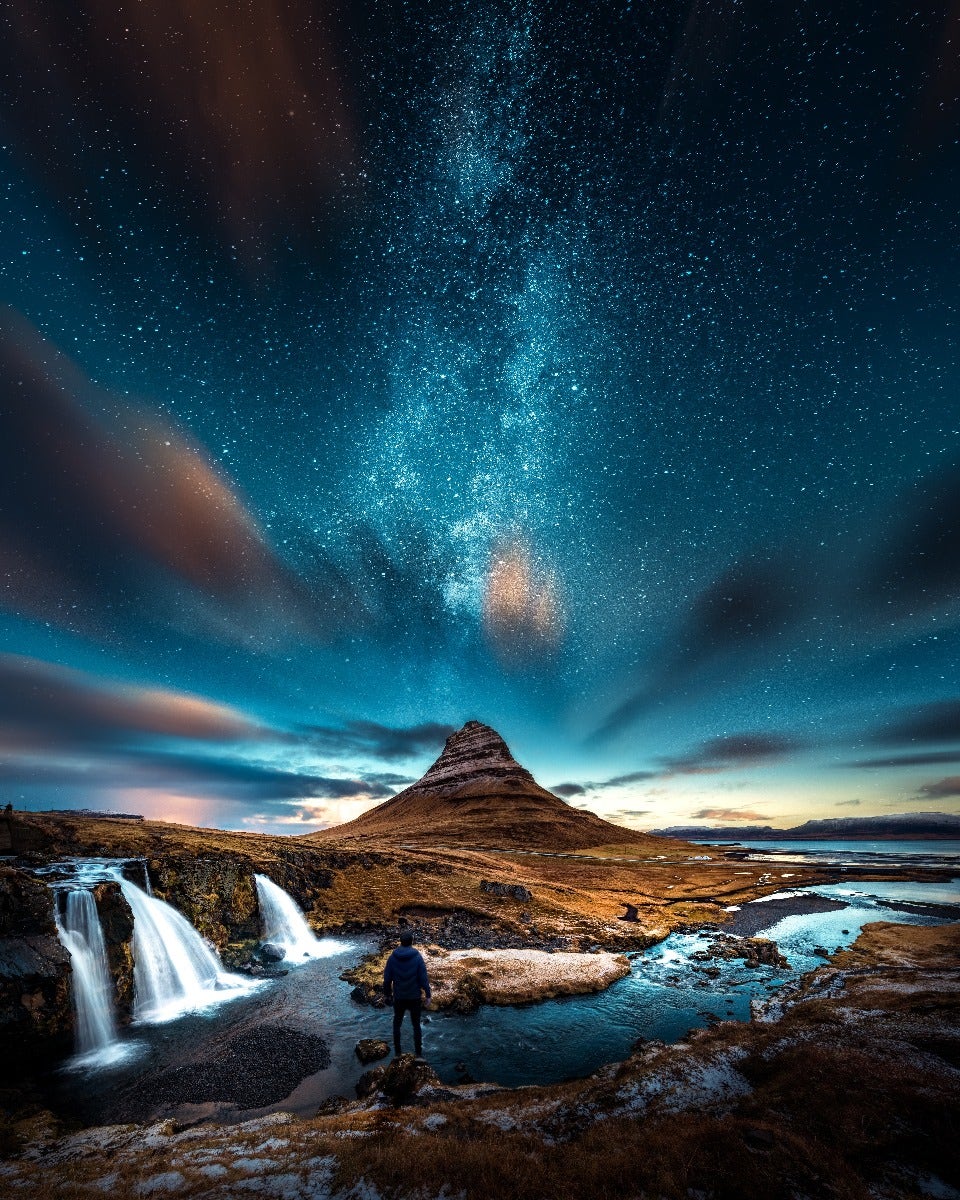
Mastering long exposure can lead to some incredible landscape images
Filters to Use with Long Exposure in Landscape Photography
While there are many filters that won't cost you an arm and a leg, it's important to know what's going to help you get the best from your time and hard-earned money. Two of the most popular filters for long exposure photography are the standard ND filter (neutral density) and the graduated ND filter.
- ND Filter - A neutral density filter is a crucial piece for long exposure shots because it uniformly reduces the amount of light that makes it to your camera's sensor. This means that you can use a longer shutter speed without letting in too much light (overexposing the image). Having a longer shutter speed is the definition of a long exposure image, so an the ND filter is typically a requirement for any long exposure shot during daylight hours. Circular ND filters can come in either fixed or variable varieties. Fixed filters darken by a set amount, so you may need a set of varying strength. Variable filters can adjust how dark they make the image, which is more flexible - however on wide angle lenses variable ND filters can sometimes cause artifacting, so be aware of that.
- Graduated ND Filter - A graduated neutral density filter restricts how much light makes it through to your camera's sensor in a very smooth and geometric pattern. They are square and they start out darker at one end and slowly fade lighter towards to other end. This is typically used to darken the sky more than the land. Since the sky is brighter than the land, using a standard ND filter to darken the sky may make the land too dark. The graduated ND allows the darkening to be more intense on the sky and less intense on the landscape, allowing them to achieve more even exposure levels. You may have heard of these filters also referred to as split filters, and you can buy different filters that transition slower or faster. Graduated ND filters come in soft-edges, reverse, and hard-edges. Soft-edges and hard-edges refer to how quickly the filter transitions from dark to light. Soft-edge filters have a very gradual and slow transition while hard-edge filters have a more jarring and abrupt transition.
Read more about filters in our "Why You Need a Filter for Your Lens" article.
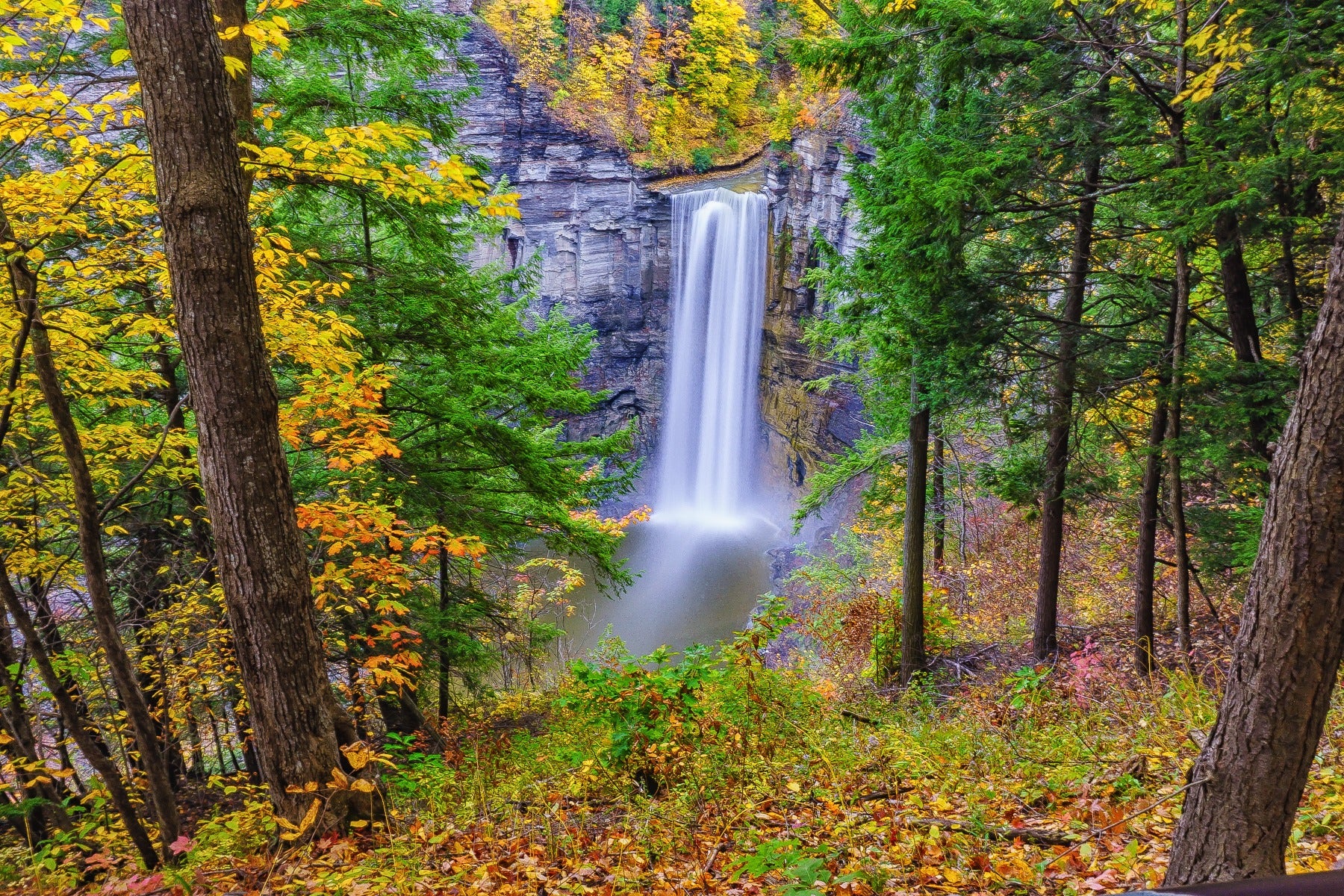
Long exposure images in a daytime environment will require the use of an ND filter
Using Narrow Apertures for Long Exposure Landscape Photography
Every lens has an aperture setting that you can adjust, and it controls how much light gets through to the camera's sensor during a shot. Photographers measure the aperture setting in f-stop values. Wide apertures come with f-stop values ranging between f/1.4 and f/2.8 because they have the widest setting and allow the most light to stream through. They also maximise the shallow depth of field (i.e. out of focus) area of a photo and as such are often used for portraits due to the artistic look this provides.
Apertures with higher f-stop numbers like f/11 and f/16 are narrow apertures that don't have large openings and only allow small amounts of light through to hit the sensor. This results in both more of the image being in focus as well as less light being let into the sensor.
Landscape photographs are typically shot with narrower apertures. This is because landscapes tend to cover wide distance ranges, from the immediate foreground to far in the distance. In most cases, the goal is to have as much of that in focus as possible, which means you want a narrow aperture - using a wide aperture would simply blur out the beautiful landscape you are trying to capture! It's also beneficial to use narrow apertures when the sun is partially obscured during a shot, because this gives point light-sources (like the sun) an attractive "sunstar" effect. Finally, as mentioned a narrow aperture lets in less light, which generally requires a longer shutter speed to compensate, hence why landscape photos are often shot via long exposures.
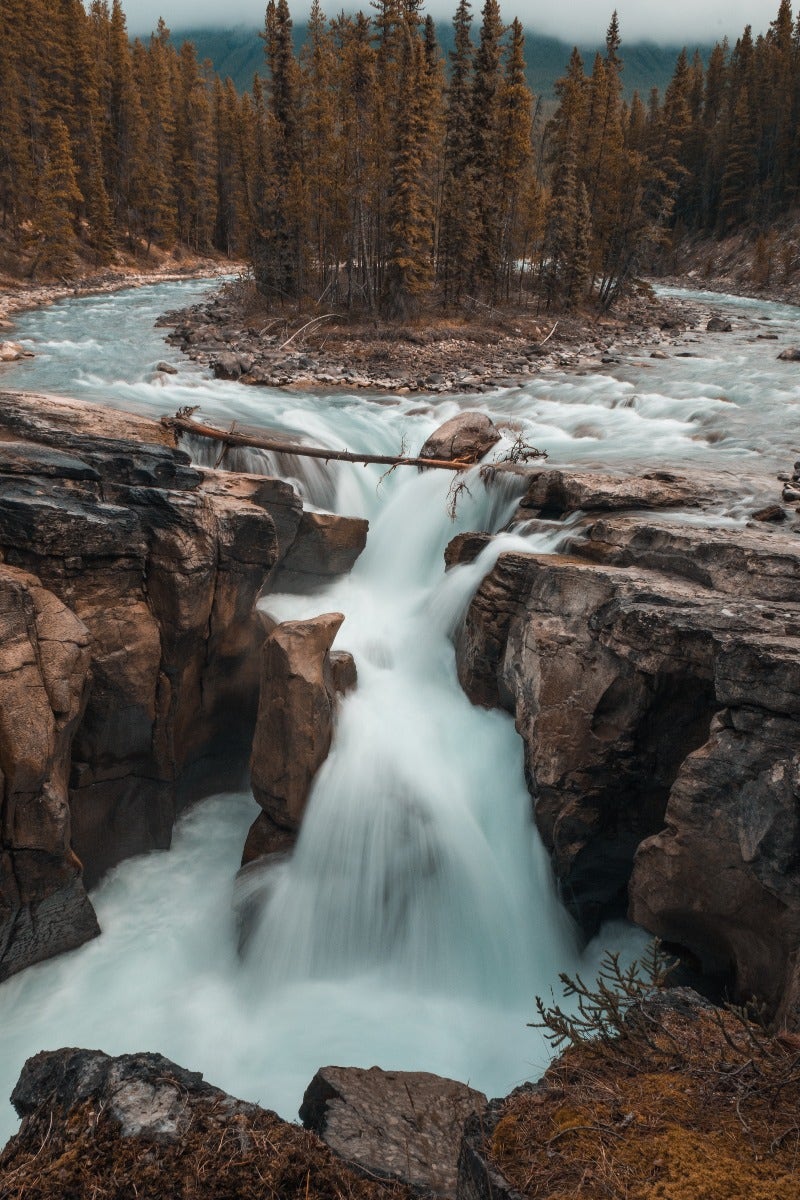
Flowing water is a common way to utilise long exposure in landscape photography
Shooting Long Exposure Landscape Photography with a Tripod
A tripod is essential for any professional or novice photographer, but it's especially important in long exposure landscape photography. You'll do exposures of at least several seconds - but up to hours! - to produce the movement you need in the shot, and this requires a stable base.
The smallest amount of movement during a long exposure shot can result in blurriness, which is why attempting to shoot handheld will not be possible when shooting an exposure of any length. The longer your shutter times are, the more this blurriness will get amplified. A good, stable and sturdy tripod is required to acheive the stability needed for a good long exposure. For very long exposures, you'll even want to factor in potential wind movement - a weightier tripod, or one that allows you to weigh it down via a hook on the underside, can be very effective here.
Learn more about tripod options in our Tripod Buyer's Guide.
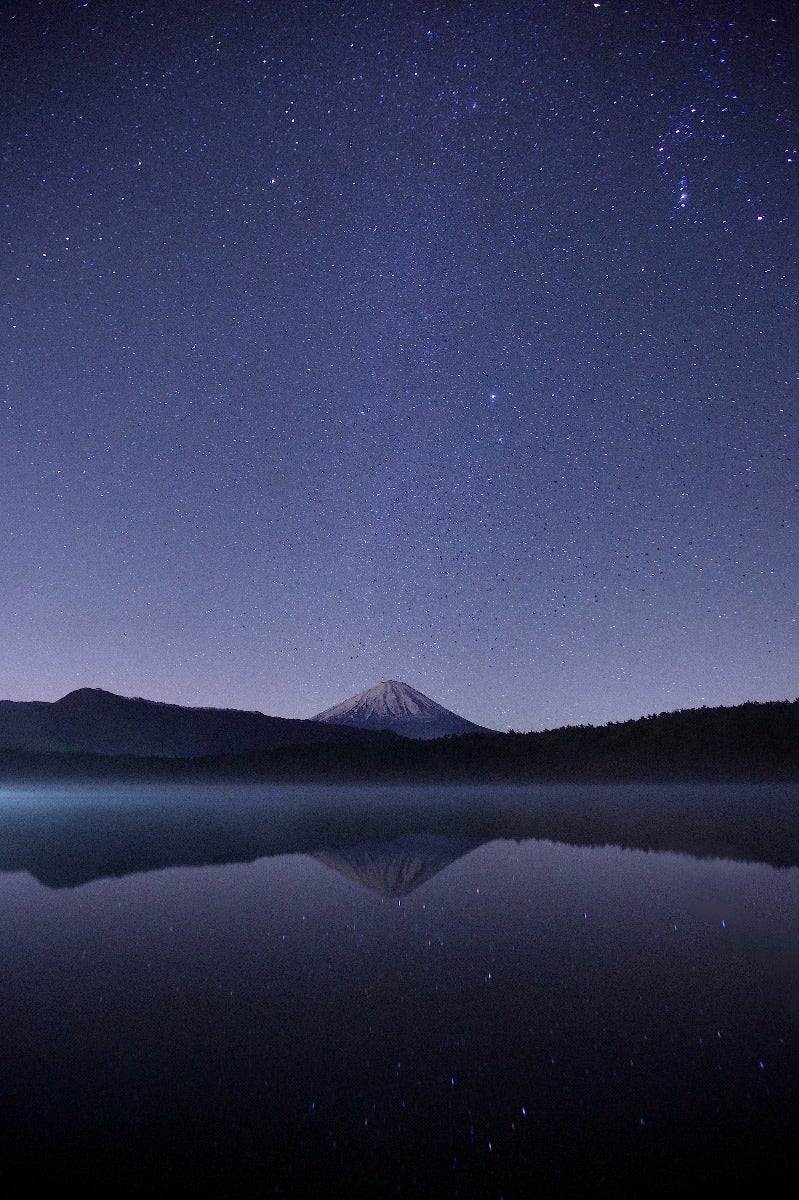
Long exposure photography can allow you to capture beautiful Milky Way images
Summary
In summary, long exposures in landscape photography can be used to great artistic effect. In order to achieve them, the two primary pieces of equipment you'll need are an ND filter (standard or graduated) and a tripod. With these two items, the world is your oyster - get out there and practice!
If you'd like more information or guidance, or if you're interested in long exposure photography equipment, you can get it from our talented team at DigiDIRECT today!
Interested in contributing to the digiLife blog? Email community@digidirect.com.au with the subject line "digiLife Contributor", and include links to your photography portfolio and a writing sample.
















































































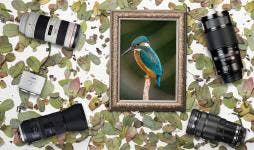
Comments
No Comments yet. Be the first to comment.